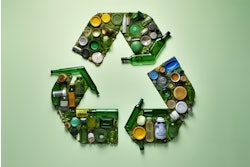No, edible packaging is not the best thing since sliced bread, nor has it lived up to the more ambitious predictions made about it over the years. Fast forwarding, recent product launches are no indication that palates pant for packaging. That won’t dissuade entrepreneurial types from offering new servings; however, it won’t be enough for those servings to come with sides of quaintness and sprinklings of novelty. Would-be marketers of edible packaging face obstacles that, by comparison, make getting children to eat Brussel sprouts look easy.
The issue is not whether a material is edible but whether people, in enough numbers, want to eat it. The two main appeals of food (understood to include drink) are taste and nutrition, the former often taking precedence. Can packaging compete on either appeal? Anyone answering to the affirmative still must grapple with another issue: disclosure. People have to be told that the packaging is edible, if there is any differentiation to be had.
Once told, then what? It’s one thing when the packaging is, for all intents and purposes, a covering, analogous to a skin; there, possibilities exist for melding the product and package for an integrated experience. Then again, flavor formulation is no cakewalk, to which food scientists can attest, and that’s not suggesting that edible packaging is the province of food scientists as opposed to chemists.
It’s another thing altogether, when the product is to be consumed first, and the packaging remains to be consumed afterward as if a dessert. Such a comparison may be a stretch; for, others might say that it likens a consumer to a goat, an animal mythically reputed to be a living garbage disposal. Reflecting those two camps, my coined acronym is, GOAT: Garbage Or Appetizing Trash. Neither interpretation is mouth-watering, obliging companies to develop edible packaging that’s as akin to real food as feasible. Whereas certain bio-packaging is sourced from agricultural waste, that’s not an appealing option for edible packaging. Sourcing from foodstuffs is not necessarily the answer, either, witness the various criticisms directed at the use of corn as a feedstock for PLA (see Packaging Insights, Aug. 27, 2014, Corn: boon or bane for bioplastics).
If edible packaging is, indeed, packaging, it should be expected to perform the functions of packaging, namely, protection, communication, and convenience. To whatever degree edible packaging affords product protection, it’s achieved by the packaging’s being protected, itself, from contamination of its exterior. If such protection comes from additional packaging, some might argue redundancy and inefficiency. In counter, at least one company uses outer packaging, said to be biodegradable and compostable. It doesn’t directly address the aforementioned argument; rather, it forces an association between edible and sustainability, one that doesn’t necessarily hold.
Communication brings to mind graphics (packaging also can communicate structurally); however, edible packaging (if it is to have graphics) imposes practical limits on pigments and dyes that would perform the tasks of conventional inks. Even if graphics are not on the edible packaging but on additional packaging, what should be communicated about the composition of the edible packaging? Doesn’t the consumer deserve to know exactly what is being ingested? A related concern is whether edible packaging is subject to nutrition labeling.
Among the functions, convenience might well deserve the most discussion. The best type of convenience is intuitive, requiring little or no convincing of its worth. By that standard, does edible packaging provide convenience meaningful to the consumer? Possibilities include: no need for removal beforehand, just eat it; and, no need for disposal afterward, just eat it.
Okay, but what research suggests that removing and tossing packaging ranks highly on consumers’ list of laments? None that I’m aware of, the closest thing being complaints about having to remove and toss more packaging than necessary. In attempting to gain strategic advantage from sustainability, companies can overestimate its value to consumers, or at least overestimate consumers’ willingness to sacrifice convenience on behalf of being more responsible stewards of the Earth. If anything, evidence points to consumers’ being amiable toward sustainability but not at the sacrifice of convenience. Having to be concerned about the exterior sanitation of the packaging is not a classic example of convenience, nor is having to rinse the packaging.
Unsavory implication?
Any implication on the part of backers of edible packaging that casts inherent aspersions on conventional packaging—well—is a notion that shouldn’t be swallowed. Marketers of ingestible products (including pharmaceuticals) know that conventional packaging is a potent, multifaceted component of brand strategy. That philosophy is manifested in investments in packaging departments, packaging research & development, and the like. That’s as it should be, given that consumers perceive packaging as a symbol for all the tangibles and intangibles embodied in a brand.
Surely, even the most ardent of subscribers to edible packaging don’t envision a mass conversion from conventional packaging. They identify what they regard as currently low-hanging fruit in addition to the possibilities that can be cultivated and harvested over time. They seem to have set their sights on the institutional sector, for example, restaurants. Another target is health-food retailers; there, certain products can be dispensed out of bulk bins and others from shelves. In the latter instance, the aforementioned combination with supposed sustainable packaging might carry more influence, given the demographic/psychographic profiles of shoppers who frequent health-food retailers.
Finally, specific loyalties notwithstanding, anyone who believes that society benefits from packaging should not begrudge the competitive battles waged among its practitioners, necessary for the overall advancement of the discipline. Ingenuity and creativity exist copiously in every sector of the packaging supplier industry; as such, while edible packaging won’t have stellar growth, it is wise to stop short of describing its future as stagnant. That’s because, in addition to packaging, something else that can prove to be edible is words, and the dining is seldom enjoyable.


























